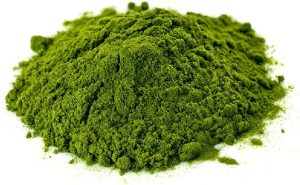
- Overview of Vitamin B9, a.k.a Folate or Folic Acid
- Brief History of Vitamin B9, a.k.a Folate or Folic Acid
- Functions of Vitamin B9, a.k.a Folate or Folic Acid
- Recommended Daily Intake (RDI), Recommended Dietary Allowance (RDA), Adequate Intake (AI), or Reference Nutrient Intake (RNI) for Vitamin B9, a.k.a Folate or Folic Acid
- Deficiency of Vitamin B9, a.k.a Folate or Folic Acid
- Food Sources of Vitamin B9, a.k.a Folate or Folic Acid and Where to Get It From
- Vitamin B9, a.k.a Folate or Folic Acid and Its Interaction with Other Medications
- Websites and Articles to Delve into the Benefits of Vitamin B9, a.k.a Folate or Folic Acid
- Disclaimer
Overview of Vitamin B9, a.k.a Folate or Folic Acid
Vitamin B9, also known as folate or folic acid (synthetic form), is a water-soluble vitamin crucial for DNA synthesis, red blood cell formation, and neural tube development during pregnancy.
It supports normal cell division, amino acid metabolism, and contributes to cardiovascular health by regulating homocysteine levels.
Folate-rich foods include leafy greens, legumes, and citrus fruits. Adequate folate intake before and during pregnancy prevents neural tube defects in the fetus.
Folate deficiency can lead to anemia and is associated with increased risk of cardiovascular disease. Supplementation is recommended in specific cases, such as during pregnancy, but should be done under healthcare guidance to prevent potential adverse effects.
Brief History of Vitamin B9, a.k.a Folate or Folic Acid
The history of Vitamin B9, or folate, is closely linked to the broader exploration of vitamins. The discovery of this essential nutrient unfolded in the early 20th century during investigations into nutritional deficiencies. Here are key milestones in the history of Vitamin B9:
- Late 1920s – Early 1930s:
- Scientists observed that anemia in certain patients could not be cured by iron supplementation alone. Researchers, including Lucy Wills, discovered a factor in yeast extract and liver that could correct this type of anemia.
- 1940s:
- Folate was isolated from spinach leaves by researchers. The term “folate” is derived from the Latin word “folium,” meaning leaf.
- 1940s – 1950s:
- Pioneering work by Dr. Sidney Farber demonstrated the efficacy of folic acid, the synthetic form of folate, in treating certain forms of anemia and leukemia.
- 1980s:
- The association between folate deficiency during pregnancy and neural tube defects (malformations of the brain and spinal cord) was established. This led to public health efforts promoting folate supplementation before and during pregnancy.
- 1990s:
- Governments worldwide implemented mandatory folic acid fortification of grain products to reduce the incidence of neural tube defects. The United States implemented fortification in 1998.
Today, folate is recognized as a crucial vitamin for various physiological processes, particularly in cell division, DNA synthesis, and the prevention of certain birth defects. It remains a vital component of prenatal care and is widely available in a variety of foods and supplements.
Functions of Vitamin B9, a.k.a Folate or Folic Acid
Vitamin B9, known as folate or folic acid (synthetic form), plays crucial roles in various physiological functions. Here are key functions of Vitamin B9:
- DNA Synthesis and Repair:
- Folate is essential for the synthesis and repair of DNA, the genetic material in cells. This is critical for normal cell division and growth.
- Red Blood Cell Formation:
- Folate is involved in the production of red blood cells, helping to prevent anemia.
- Neural Tube Development:
- Adequate folate intake, especially during the early stages of pregnancy, is crucial for the proper development of the neural tube in the fetus. Neural tube defects can occur if there is a deficiency in this vitamin during pregnancy.
- Amino Acid Metabolism:
- Folate is necessary for the metabolism of certain amino acids, the building blocks of proteins.
- Cell Division and Growth:
- Folate supports normal cell division and growth, making it essential for overall tissue maintenance.
- Prevention of Anemia:
- Folate deficiency can lead to megaloblastic anemia, characterized by large, immature red blood cells.
- Cardiovascular Health:
- Folate is associated with cardiovascular health, and adequate levels may help lower homocysteine levels, a risk factor for cardiovascular disease.
- Mood Regulation:
- Folate is involved in the synthesis of neurotransmitters like serotonin, contributing to mood regulation.
- Prevention of Neural Tube Defects:
- Adequate folate intake before and during pregnancy significantly reduces the risk of neural tube defects in the developing fetus.
Maintaining sufficient folate levels through diet, supplementation when necessary, and prenatal care is crucial for overall health and the prevention of certain birth defects.
Recommended Daily Intake (RDI), Recommended Dietary Allowance (RDA), Adequate Intake (AI), or Reference Nutrient Intake (RNI) for Vitamin B9, a.k.a Folate or Folic Acid
The Recommended Dietary Allowance (RDA) for Vitamin B9, also known as folate, can vary based on factors such as age, sex, and life stage. The values provided below are general recommendations, and individual needs may vary. The values are typically given in micrograms (mcg) of dietary folate equivalents (DFE) per day:
- Infants (0-6 months): 65 mcg DFE
- Infants (7-12 months): 80 mcg DFE
- Children (1-3 years): 150 mcg DFE
- Children (4-8 years): 200 mcg DFE
- Children (9-13 years): 300 mcg DFE
- Adolescents (14-18 years): 400 mcg DFE
- Adults (19 years and older): 400 mcg DFE
- Pregnant individuals: 600 mcg DFE
- Breastfeeding individuals: 500 mcg DFE
It’s important to note that the values are provided in dietary folate equivalents (DFE) because the body absorbs synthetic folic acid more efficiently than the folate found in food. The conversion factor for folic acid to DFE is 1 mcg of synthetic folic acid equal to 0.6 mcg of food folate.
These values are general recommendations, and individual requirements may vary based on factors such as overall health, dietary patterns, and lifestyle. Pregnant individuals, in particular, often have higher folate requirements. Always consult with a healthcare professional or a registered dietitian for personalized advice based on specific circumstances. Additionally, nutrient recommendations may be subject to updates, so it’s advisable to refer to the latest dietary guidelines from health authorities in your region.
Deficiency of Vitamin B9, a.k.a Folate or Folic Acid
Vitamin B9, also known as folate, deficiency can lead to various health issues due to its crucial roles in cell division, DNA synthesis, and other essential processes. Here are some potential consequences and symptoms of Vitamin B9 deficiency:
- Megaloblastic Anemia:
- Folate deficiency can result in megaloblastic anemia, a condition characterized by the production of large and immature red blood cells. This type of anemia can lead to fatigue, weakness, and pale skin.
- Neural Tube Defects:
- In pregnant individuals, inadequate folate intake increases the risk of neural tube defects in the developing fetus. These defects can affect the brain and spinal cord and may result in serious developmental issues.
- Gastrointestinal Issues:
- Folate deficiency can contribute to gastrointestinal symptoms such as diarrhea, weight loss, and mouth ulcers.
- Impaired Immune Function:
- Folate plays a role in the immune system, and deficiency may impair the body’s ability to fight infections.
- Cognitive Impairment:
- Some research suggests a link between low folate levels and cognitive decline, potentially contributing to issues such as memory loss and difficulty concentrating.
- Increased Risk of Cardiovascular Disease:
- Folate deficiency is associated with elevated homocysteine levels, which is a risk factor for cardiovascular disease.
- Fatigue and Weakness:
- Insufficient folate levels can lead to general symptoms of fatigue, weakness, and lethargy.
Vitamin B9 deficiency is relatively uncommon in well-balanced diets that include folate-rich foods such as leafy greens, legumes, and fortified cereals. However, certain factors such as poor dietary habits, malabsorption conditions, alcoholism, and pregnancy can increase the risk of deficiency. Pregnant individuals are often advised to take folic acid supplements to prevent neural tube defects in the developing fetus.
Individuals experiencing symptoms or at risk of Vitamin B9 deficiency should consult with a healthcare professional for proper evaluation and guidance. Supplementation may be recommended in specific cases under medical supervision.
Food Sources of Vitamin B9, a.k.a Folate or Folic Acid and Where to Get It From
Vitamin B9, also known as folate or folic acid (its synthetic form), is found in a variety of foods. Including these foods in your diet can help ensure an adequate intake of Vitamin B9. Here are some common food sources:
- Leafy Green Vegetables:
- Spinach, kale, collard greens, and other leafy greens are rich sources of folate.
- Legumes:
- Lentils, chickpeas, black beans, and other legumes are excellent sources.
- Citrus Fruits:
- Oranges, grapefruits, and other citrus fruits provide folate.
- Avocado:
- Avocado is a fruit that contains folate.
- Asparagus:
- Asparagus is a vegetable with a significant folate content.
- Broccoli:
- Broccoli is a cruciferous vegetable that contains folate.
- Papaya:
- Papaya is a tropical fruit that is a good source of folate.
- Fortified Grains and Cereals:
- Many grains and cereals are fortified with folic acid. Check food labels for information.
- Liver:
- Beef liver is a rich source of folate, but it should be consumed in moderation due to its high vitamin A content.
- Eggs:
- Eggs, particularly the yolk, contain folate.
Including a variety of these foods in your diet can contribute to meeting your Vitamin B9 requirements. Additionally, for pregnant individuals or those planning pregnancy, folic acid supplements are often recommended to prevent neural tube defects in the developing fetus. As always, it’s advisable to consult with a healthcare professional or a registered dietitian for personalized advice based on your specific nutritional needs.
Vitamin B9, a.k.a Folate or Folic Acid and Its Interaction with Other Medications
Vitamin B9, also known as folic acid or folate, generally has few interactions with medications. However, there are a few considerations to be aware of, particularly in terms of potential interactions. Always consult with your healthcare provider before starting any new supplements, especially if you are taking medications. Here are some points to consider:
- Methotrexate:
- Methotrexate is a medication commonly used in the treatment of certain cancers, autoimmune diseases, and severe psoriasis. High doses of folic acid can reduce the effectiveness of methotrexate. However, in some cases, healthcare providers may prescribe folic acid supplements to mitigate side effects of methotrexate while carefully managing the timing and dosage.
- Antiepileptic Medications:
- Some antiepileptic medications, such as phenytoin and phenobarbital, may interfere with the absorption and utilization of folate. Individuals on long-term antiepileptic therapy may require monitoring of folate levels.
- Sulfasalazine:
- Sulfasalazine, used to treat inflammatory bowel diseases such as ulcerative colitis, may interfere with folate absorption. Folate supplementation may be recommended for individuals on long-term sulfasalazine therapy.
- Bile Acid Sequestrants:
- Certain medications used to lower cholesterol, such as bile acid sequestrants (e.g., cholestyramine), may reduce the absorption of folic acid. These medications should be taken at least 1 hour before or 4-6 hours after folic acid supplementation.
- Triamterene:
- Triamterene, a diuretic used to treat high blood pressure, may reduce the body’s ability to convert folic acid to its active form. Monitoring folate levels may be necessary.
While these interactions are noted, they are generally manageable with proper medical supervision. It’s crucial to inform your healthcare provider about all medications and supplements you are taking to ensure comprehensive and safe healthcare management. Always follow the advice of your healthcare professional for the appropriate timing and dosages of medications and supplements.
Websites and Articles to Delve into the Benefits of Vitamin B9, a.k.a Folate or Folic Acid
Here’s a brief summary of information about Vitamin B9 (Folate/Folic Acid) from the provided websites:
- Mayo Clinic:
- The Mayo Clinic’s page on folate provides an overview of its importance in the body, including its role in DNA synthesis and cell growth. It also lists dietary sources such as leafy green vegetables, fruits, and legumes.
- Harvard T.H. Chan School of Public Health:
- The Harvard Nutrition Source page on folic acid discusses its role in preventing neural tube defects during pregnancy and its impact on heart health. It covers both natural folate and synthetic folic acid.
- Mount Sinai:
- The Mount Sinai Health Library page on Vitamin B9 (folic acid) provides information on its functions, dietary sources, recommended intake, and potential health benefits.
- Wikipedia:
- The Wikipedia page on folate offers an extensive overview, covering its chemical structure, functions in the body, dietary sources, and medical uses.
- Medical News Today:
- The Medical News Today article covers various aspects of folic acid, including its functions, sources, recommended intake, and potential health benefits.
- WebMD:
- The WebMD page on folic acid provides information on its uses, side effects, interactions, and dietary sources. It also discusses the importance of folic acid during pregnancy.
- Cleveland Clinic:
- The Cleveland Clinic’s page on Vitamin B9 highlights its role in preventing birth defects and supporting heart health. It discusses dietary sources and the importance of supplementation.
- WebMD (Supplement Guide):
- The WebMD supplement guide on folic acid covers its uses, side effects, interactions, and recommended dosages. It emphasizes its importance during pregnancy.
- Arshine Food Additives:
- The Arshine Food Additives page provides information on Vitamin B9 (folic acid) and its functions. It mentions dietary sources and may also include details about folic acid supplements.
- Healthline:
- The Healthline article on folic acid explores its functions, sources, recommended intake, and potential health benefits.
These summaries provide a snapshot of the information available on each website. For more detailed information, you may want to visit the respective websites directly.
Disclaimer
The information is solely provided for educational purposes. It is not intended to diagnose, treat, cure, or prevent any disease. Seek the advice of your physician or qualified healthcare provider with any questions you may have regarding a medical condition at all times. Never disregard professional medical advice because of something you have read or learned from this article.






